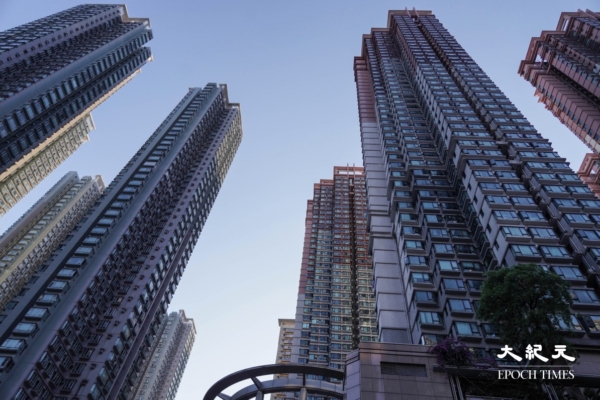In a recent development in China, the state-owned enterprise Hefei Construction Group Co., Ltd. (referred to as “Hefei Construction”), a construction company that has stood tall in Anhui for 67 years, is facing dissolution due to a broken funding chain and debts amounting to billions of yuan. The company recently notified some of its employees via text message on July 31st that their labor contracts would be terminated starting from August 31, 2025, with salary settlements up to that date and economic compensation to be paid in accordance with the law.
Amidst the wave of business closures in China, state-owned enterprises are also finding it difficult to escape unscathed. Hefei Construction, as a well-established state-owned enterprise, is expected to cease operations by the end of August due to debts exceeding billions of yuan. According to a report by Sina Finance on August 11, some employees of Hefei Construction have been receiving text messages from the company since July 31, stating that their labor contracts will be terminated starting from August 31, 2025, with salary settlements up to that date and economic compensation to be paid as required by law. However, with the extremely deteriorating financial situation of the company, many employees are worried about whether the compensation can be paid on time.
Public financial data shows that as of November 2024, Hefei Construction had total assets of approximately 12.73 billion yuan, total debts amounting to a staggering 16.229 billion yuan, net debt exceeding 3.5 billion yuan, with an asset-liability ratio of 127%, indicating a severe financial imbalance. At the end of last year, the court had already accepted a bankruptcy reorganization application filed by Anhui Anliang Group and other creditors, leading the company into a judicial process.
Anhui economist Wu Tian (pseudonym) pointed out in an interview with Epoch Times on August 12 that after Evergrande’s funding chain broke in 2021, a large amount of project funds turned into bad debts, severely impacting the company’s cash flow. “Hefei Construction’s plight is closely related to the continued downturn in the real estate market in recent years, the contraction of local infrastructure investment, and the rise in financing costs, leading to the rupture of the funding chain. In 2021, Hefei Construction bundled 70% of its projects with Evergrande, while also facing significant corruption issues among senior executives and an extremely high debt ratio. I estimate that they are unable to pay the compensation to their employees.”
Wu Tian believes that the bankruptcy of Hefei Construction is not an isolated case, as state-owned enterprises in Gansu, Guizhou, Ningxia, Sichuan, and other areas have also recently entered liquidation proceedings, indicating that both Chinese state-owned and private enterprises are facing similar challenges in the post-pandemic era. He said, “The economic structure under the Chinese Communist Party system is not conducive to the healthy growth of businesses. In this environment, the number of business closures will only continue to increase.”
According to a report by Caixin on March 6, Liu Guofu, the former chairman of Hefei Construction Group, was dismissed from his position due to serious violations of laws and regulations. Ten days later, due to insolvency and difficulties in repaying due debts, Hefei Construction was ruled by the intermediate court of Hefei to accept bankruptcy restructuring proceedings, with Beijing Dacheng Law Firm and its Hefei branch appointed as the administrators to take over company assets and accounts and facilitate the judicial process.
Details regarding Liu Guofu’s alleged corruption and related reports have not been disclosed by the authorities. However, according to insiders close to Hefei Construction, Liu Guofu is suspected of embezzling project funds and engaging in irregular behavior under the guise of the company, with the Anhui Provincial Commission for Discipline Inspection of the Chinese Communist Party having been informed. This has to some extent exacerbated the loss of state-owned assets and internal turmoil within the company.
Mr. Xu, a retired civil servant in Hefei, revealed to Epoch Times reporters that the issue of corruption within state-owned enterprises in Hefei is extremely serious and is one of the key factors leading to the liquidation of Hefei Construction. He stated, “The senior management of Hefei Construction received substantial kickbacks from the Evergrande real estate projects. The cooperation between Hefei Construction and Evergrande essentially involved an exchange of interests among the management, with Hefei Construction providing funding and project contracting while Evergrande rewarded senior executives with kickbacks. Otherwise, why would Evergrande provide projects to them?”
According to a report by Sina Finance, as early as March 2024, employees of Hefei Construction had been notified of a standby period lasting for nine months, with compensation standards set only at the local minimum wage, reflecting the current state of the company’s depleted liquidity. Now, with employees receiving notice of contract termination once again, many are concerned about the payment of compensation, with some expressing doubts that the company’s accounts have long been depleted, and the compensation may turn out to be nothing more than an illusion.
Founded in 1958, Hefei Construction has a long history, originally under the jurisdiction of the Hefei Construction Bureau. After undergoing multiple reforms and reorganizations, it was merged into Anhui Anliang Group in 2008 and became a subsidiary of the Hailuo Group in 2018. However, with the downward trend of the Chinese economy and the collapse of the real estate industry, this long-standing state-owned enterprise is unable to escape its fate of liquidation.
Currently, the departments of labor security in Hefei City and Anhui Province have not made any public response regarding the details of employee compensation and relocation measures. For the hundreds of engineering personnel who have dedicated their lives to urban development, this sudden dissolution not only signifies a major turning point in their careers but also brings about significant pressure in their lives.

